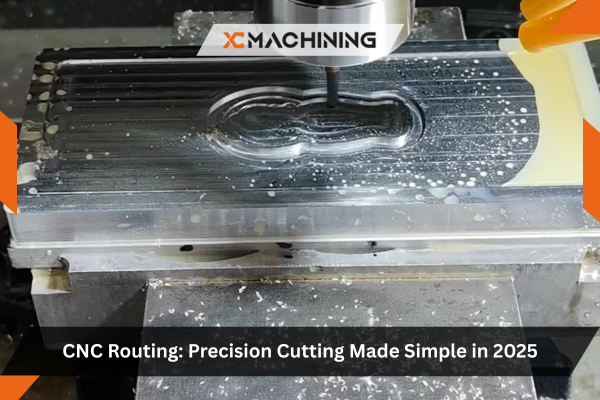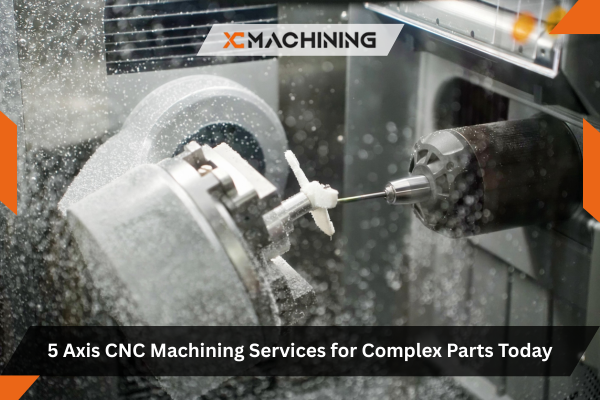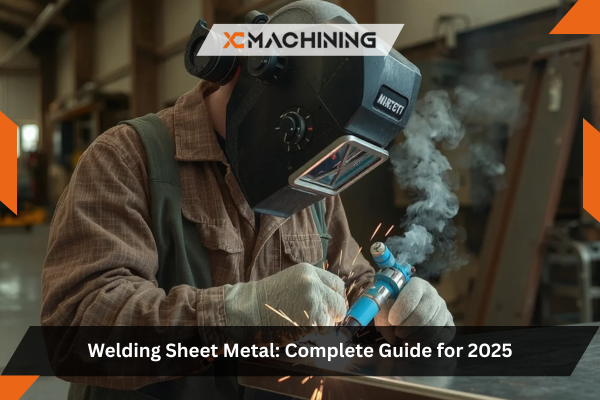The medical device industry continues its rapid evolution, driven by technological advances, demographic shifts, and increasing demands for personalized healthcare solutions. At the manufacturing heart of this innovation lies CNC machining medical parts a precision manufacturing technology that transforms biocompatible materials into the components enabling modern medicine. As we progress through 2025, certain applications stand out for their impact on patient care, technological sophistication, and manufacturing challenges. Understanding these top applications reveals where CNC machining medical devices delivers the greatest value, the materials and processes enabling these innovations, and the trends shaping the future of medical manufacturing. This examination of seven leading applications provides manufacturers, engineers, and healthcare professionals insight into how precision machining supports contemporary healthcare delivery.
Table des matières
1. Patient-Specific Orthopedic Implants
The shift toward personalized medicine has dramatically affected orthopedic surgery, where patient-specific implants designed from individual CT or MRI scans achieve superior outcomes compared to off-the-shelf alternatives. CNC machining medical parts enables economic production of these custom components in quantities of one.
Manufacturing Custom Implants
Medical device CNC machining produces patient-specific orthopedic components including custom hip stems contoured to individual femoral anatomy, knee replacement components matched to patient bone geometry, spinal cages designed for specific vertebral spacing and lordotic angles, trauma plates pre-bent to fit unique fracture patterns, and cranial reconstruction plates precisely matching skull contours.
Traditional mass production relies on economies of scale producing thousands of identical parts amortizes tooling costs across high volumes. Custom implants invert this model, requiring manufacturing processes that produce single parts economically. CNC machining medical devices meets this challenge through:
No tooling requirements: CNC machines execute programs directly from patient-specific CAD models without dies, molds, or dedicated fixtures eliminating tooling costs that would make custom implants prohibitively expensive.
Rapid programming turnaround: CAM software generates toolpaths from patient scans within hours, enabling fast transition from imaging to manufacturing.
Material versatility: Medical CNC turning and milling equipment handles titanium alloys, cobalt-chrome, and stainless steels the materials for CNC machining that provide biocompatibility and mechanical properties custom implants require.
Materials and Considerations
Patient-specific orthopedic implants primarily utilize Ti-6Al-4V titanium alloy for its exceptional biocompatibility, favorable strength-to-weight ratio, and proven osseointegration (bone bonding) capabilities. CNC machining metal materials like titanium presents challenges low thermal conductivity, chemical reactivity with tool materials, and work-hardening tendency requiring specialized tooling, cutting parameters, and expertise.
Manufacturers must maintain comprehensive documentation linking each custom implant to specific patient imaging, validating that manufactured geometry matches surgical plans within specified tolerances (typically ±0.2mm for critical features).
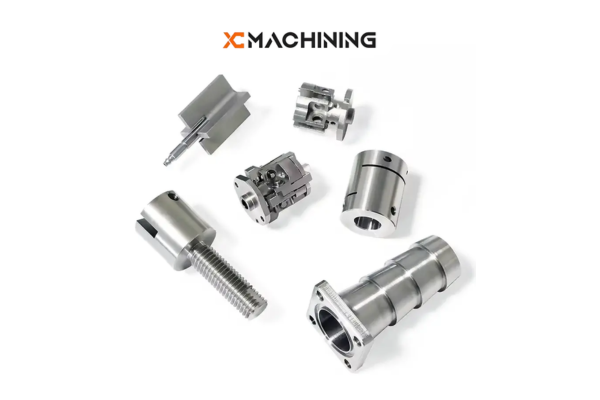
2. Minimally Invasive Surgical Instrument Components
The continued expansion of minimally invasive surgery (MIS) drives demand for sophisticated instruments enabling procedures through small incisions. These instruments combine mechanical complexity with miniaturization, creating manufacturing challenges that CNC machining medical parts addresses effectively.
Complex Mechanism Production
Laparoscopic and arthroscopic instruments feature long, narrow profiles (typically 5-10mm diameter) housing complex mechanisms. Medical device CNC machining produces:
Articulating jaw mechanisms: Miniature joints enabling instrument tips to rotate and grasp at angles from shaft axis. Precision tolerances (±0.05mm or tighter) ensure smooth articulation without excessive play.
Actuating linkages: Internal push-rods, cables, and mechanical connections translating handle movements to end-effector actions. These components require precise lengths, surface finishes, and mechanical properties ensuring reliable force transmission.
Locking mechanisms: Ratchets, detents, and locking features providing staged closing forces or maintaining instrument positions. Tooth profiles, engagement angles, and surface hardness all affect function.
Modular connections: Standardized interfaces enabling instrument tips, shafts, and handles to combine in various configurations. Dimensional consistency across components ensures proper assembly and function.
Manufacturing Precision Requirements
MIS instrument components demand exceptional dimensional accuracy and surface finish quality. Tournage CNC médical produces shafts with diameter tolerances of ±0.025mm maintaining concentricity within 0.05mm across 300-400mm lengths. Milling operations create jaw mechanisms with feature locations held to ±0.05mm ensuring proper alignment. Surface finishes range from 32 Ra for general external surfaces to 8 Ra or better for bearing surfaces and sliding interfaces.
Materials span stainless steel alloys (316L for general components, 17-4 PH for high-strength applications), titanium for specific instruments, and medical-grade plastics (PEEK, Ultem) for handles and non-critical components.
3. Dental Implant Components and Prosthetics
Dental restoration and implantology represent enormous markets where CNC machining medical parts produces both standardized components and custom prosthetics in high volumes.
Implant Fixtures and Abutments
Dental implant systems consist of fixtures (the threaded post embedded in bone) and abutments (the connectors between fixtures and crowns). CNC machining medical devices produces millions of these components annually in titanium and titanium alloys.
Implant fixture manufacturing challenges:
- External threads requiring precise pitch, depth, and profile for optimal bone integration
- Internal connection features with tight tolerances ensuring proper abutment seating
- Coronal platforms with specific dimensions and surface finishes
- Overall lengths, diameters, and tapers matching specific product designs
Abutment production requirements:
- Custom angles matching individual patient anatomy (0-45° off-axis common)
- Precise connection interface ensuring fixture compatibility
- Emergence profiles supporting natural tooth appearance
- Surface finish quality affecting soft tissue response
Medical CNC turning dominates fixture production, with bar stock progressing through multiple operations creating external threads, internal connections, and finished surfaces. Abutment production employs both turning and milling operations depending on complexity and customization level.
Custom Dental Prosthetics
The dental industry increasingly adopts digital workflows where intraoral scans generate 3D models processed into custom prosthetics. CNC machining materials like zirconia, PMMA (polymethyl methacrylate), and titanium transform into crowns, bridges, and frameworks matched to individual patient anatomy.
Five-axis CNC machining centers produce these complex organic forms efficiently, with single machines processing dozens of unique prosthetics daily. The combination of accuracy (±50 microns typical), material authenticity, and production speed makes CNC machining competitive with additive manufacturing for dental applications.
4. Cardiovascular Device Components
Cardiovascular devices protecting and restoring heart function depend on precision components manufactured to exacting standards. CNC machining medical devices produces critical elements including surgical instrument components, transcatheter delivery system parts, and support equipment.
Heart Valve Delivery System Components
Transcatheter aortic valve replacement (TAVR) and mitral valve repair procedures utilize sophisticated delivery systems positioning replacement valves or repair devices within beating hearts. These systems incorporate precision machined components:
Catheter assemblies: Stainless steel or titanium shafts (2-8mm diameter) with internal lumens, radiopaque markers, and connection features. Medical CNC turning produces these components with wall thicknesses as small as 0.15mm while maintaining concentricity and internal surface finish.
Deployment mechanisms: Mechanical systems controlling valve expansion or repair device actuation. These mechanisms combine rotational and linear motion, requiring precisely machined gears, cams, and guides.
Hemostasis valves: Sealing systems preventing blood loss through catheter introducers while allowing instrument passage. Components require specific dimensions, surface finishes, and tolerance relationships ensuring reliable sealing.
Surgical Instrument Production
Cardiovascular surgery demands specialized instruments including vascular clamps with precisely matched jaws minimizing vessel trauma, anastomosis devices for vessel connections, specialized scissors and forceps for delicate tissue work, and retractor systems providing surgical exposure.
Medical device CNC machining produces these instruments primarily from stainless steel alloys—316L for general instruments, 420 or 440C for cutting edges, and 17-4 PH for high-stress applications. Complex geometries, tight tolerances, and superior surface finishes characterize cardiovascular instrument manufacturing.
5. Surgical Robotics Components
Robotic surgery systems have transitioned from experimental technology to standard care in many surgical specialties. These sophisticated systems depend on precision mechanical components that CNC machining medical parts produces at scale.
Robotic Arm Components
Surgical robot manipulators contain numerous precision machined elements enabling controlled movement with sub-millimeter accuracy:
Joint assemblies: Rotational joints incorporating bearings, gears, and position sensors. These mechanisms require precise bore diameters, gear tooth profiles, and mounting surfaces ensuring smooth, accurate motion.
Structural housings: Aluminum or magnesium alloy enclosures providing rigid support while minimizing weight. Complex internal features house electronics, sensors, and mechanical systems.
Drive train components: Precision gears, couplings, and transmission elements transferring motor torque to robotic arms. Backlash elimination and smooth motion demand tight manufacturing tolerances.
Instrument interface mechanisms: Standardized connections enabling quick instrument exchange. Precise dimensions ensure instruments mount correctly with proper electrical and mechanical engagement.
End-Effector Components
Robotic surgical instruments (end-effectors) attach to robotic arms, translating surgeon hand movements into precise surgical actions. These instruments contain miniature mechanisms comparable to manual laparoscopic instruments but with additional complexity for robotic actuation. Medical CNC turning produces instrument shafts, while milling operations create complex jaw mechanisms, pivot joints, and actuation linkages.
Materials selection balances strength, weight, and biocompatibility requirements. Titanium alloys serve weight-critical applications, stainless steel provides economical performance for most components, and engineering plastics contribute to electrical insulation and specific functional requirements.
6. Diagnostic and Laboratory Equipment Components
Medical diagnosis depends increasingly on sophisticated analytical equipment requiring precision mechanical components. CNC machining medical equipment produces parts enabling accurate, reliable diagnostic testing.
Fluid Handling Systems
Laboratory analyzers and diagnostic equipment incorporate complex fluid management systems with components including precision-bore syringes and pumps delivering exact fluid volumes, valve assemblies directing sample and reagent flow, manifolds distributing fluids to multiple destinations, and sealing surfaces maintaining leak-free operation.
Medical device CNC machining produces these components from stainless steel, titanium, and engineered plastics. Bore tolerances within ±0.01mm ensure volumetric accuracy, while surface finishes below 8 Ra minimize fluid adhesion and facilitate cleaning.
Optical and Mechanical Assemblies
Imaging equipment and optical diagnostic systems require precision mechanical components including lens mounts maintaining optical alignment, positioning stages enabling precise sample or detector movement, structural assemblies supporting delicate optical elements, and environmental enclosures protecting components while allowing optical access.
Aluminum alloys dominate these applications for excellent stiffness-to-weight ratios, superior thermal stability, and good machinability. Anodizing provides corrosion protection and cosmetic finish.
7. Drug Delivery Device Components
The pharmaceutical industry’s shift toward sophisticated delivery systems from insulin pens and autoinjectors to implantable drug pumps creates demand for precision mechanical components that medical CNC machining produces.
Autoinjector Mechanisms
Autoinjectors enable patients to self-administer medications through spring-loaded injection systems. These devices require numerous precision components:
Plunger rods: Stainless steel or plastic shafts engaging syringes and transmitting injection force. Dimensional consistency ensures reliable engagement and smooth travel.
Drive springs: Wire forms or machined springs providing consistent injection force. Medical CNC turning produces retaining features and interfaces.
Trigger mechanisms: Safety releases, activation buttons, and mechanical interlocks preventing accidental injection. Precise feature locations and surface finishes ensure reliable operation through device shelf life.
Housing components: Structural elements providing rigidity, guiding moving parts, and protecting internal mechanisms. Materials for CNC machining in autoinjectors include engineering plastics (acetal, polycarbonate) for housings and stainless steel for mechanisms.
Implantable Pump Components
Implantable drug pumps deliver medication continuously or on programmed schedules for chronic conditions. These sophisticated devices contain precisely machined elements including titanium housings providing biocompatibility and hermetic sealing, pump mechanisms delivering exact volumes consistently, catheter interfaces ensuring secure, leak-free connections, and electronic component housings protecting sensitive circuits.
Manufacturing these components demands exceptional quality control and documentation. Every dimension, surface finish, and material property must meet specifications validated through extensive testing and regulatory review.
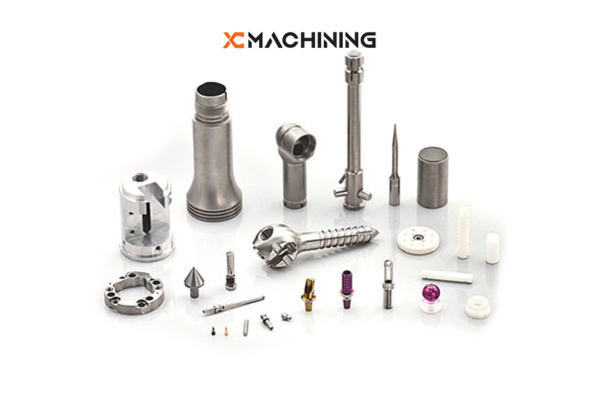
Manufacturing Technology Trends in 2025
Several technological advances shape CNC machining medical parts production in 2025:
Hybrid manufacturing integration: Combining additive manufacturing with subtractive CNC machining enables complex internal geometries with precision external features particularly valuable for patient-specific implants with bone ingrowth structures.
Enhanced process monitoring: Real-time monitoring systems detect tool wear, dimensional drift, and process anomalies before defects occur, improving quality consistency and reducing scrap.
Automation expansion: Robotic loading/unloading systems and automated quality inspection enable lights-out production increasing capacity while maintaining quality standards.
Advanced materials processing: New biocompatible alloys and bioabsorbable metals expand design possibilities, requiring manufacturing expertise in novel materials.
Quality and Regulatory Considerations
All seven applications face rigorous quality requirements and regulatory oversight. CNC machining medical devices must occur within quality management systems meeting ISO 13485 standards. Design control, process validation, and comprehensive documentation link each manufactured part to material certifications, processing records, and inspection results.
FDA classifications vary by application Class I for some surgical instruments, Class II for many implants and devices, and Class III for life-sustaining equipment. European MDR and other international regulations add complexity to global medical device manufacturing.
Material traceability proves critical across all applications. Mill test reports certify chemical composition and mechanical properties, enabling complete traceability from raw material through finished device.
Conclusion
CNC machining medical parts serves as the manufacturing foundation for diverse healthcare applications in 2025, from patient-specific orthopedic implants restoring mobility to sophisticated robotic surgery systems enabling minimally invasive procedures. The technology’s combination of precision, material versatility, and production flexibility addresses the medical device industry’s unique requirements tight tolerances ensuring reliable function, biocompatible materials protecting patient safety, rapid prototyping accelerating innovation, and scalable production supporting commercialization.
These seven applications custom orthopedic implants, minimally invasive instrument components, dental systems, cardiovascular devices, surgical robotics, diagnostic equipment, and drug delivery mechanisms represent where medical CNC turning, milling, and multi-axis machining deliver maximum value in contemporary healthcare manufacturing. Each application presents distinct challenges in materials selection, dimensional requirements, surface finish specifications, and regulatory compliance that manufacturers address through specialized expertise, quality systems, and continuous technological advancement.
As medical technology evolves toward increasing personalization, miniaturization, and sophistication, CNC machining medical parts will remain central to translating innovative designs into physical devices that diagnose disease, guide treatment, restore function, and ultimately improve patient outcomes through manufacturing excellence meeting healthcare’s demanding standards.
FAQ
Quels sont les matériaux les plus sûrs pour les implants ?
Le titane-64 et le PEEK sont en tête de liste car ils sont biocompatibles, résistent à la corrosion et s'intègrent rapidement à l'os.
À quelle vitesse une hanche sur mesure peut-elle être fabriquée en 2025 ?
Grâce aux scanners numériques et à l'usinage sur cinq axes, les hanches adaptées au patient sont souvent expédiées dans les 48 heures suivant le téléchargement des données.
La CNC l'emporte-t-elle sur l'impression 3D pour les instruments chirurgicaux ?
Pour la plupart des outils en acier inoxydable, oui. La CNC offre des finitions plus lisses et des tolérances plus serrées, tandis que l'impression reste excellente pour les structures poreuses des implants.
L'usinage offshore est-il risqué pour les pièces médicales ?
Seulement si la traçabilité n'est pas assurée. Des ateliers asiatiques réputés, certifiés ISO 13485, peuvent répondre aux normes occidentales s'ils sont associés à des audits de qualité solides.


